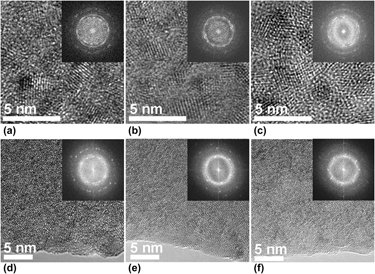Article contents
Model for electron-beam-induced crystallization of amorphous Me–Si–C (Me = Nb or Zr) thin films
Published online by Cambridge University Press: 21 November 2014
Abstract

We use transmission electron microscopy (TEM) for in situ studies of electron-beam-induced crystallization behavior in thin films of amorphous transition metal silicon carbides based on Zr (group 4 element) and Nb (group 5). Higher silicon content stabilized the amorphous structure while no effects of carbon were detected. Films with Nb start to crystallize at lower electron doses than the Zr-containing ones. During the crystallization, equiaxed MeC grains are formed in all samples with larger grains for ZrC (∼5 nm) compared to NbC (∼2 nm). The phenomenon of self-terminating crystallization at a dimension of 2–5 nm is explained by segregation of Si that is expelled from growing metal carbide grains into the surrounding amorphous phase matrix, which limits diffusion of the metal and carbon.
- Type
- Articles
- Information
- Copyright
- Copyright © Materials Research Society 2014
References
REFERENCES
- 8
- Cited by


